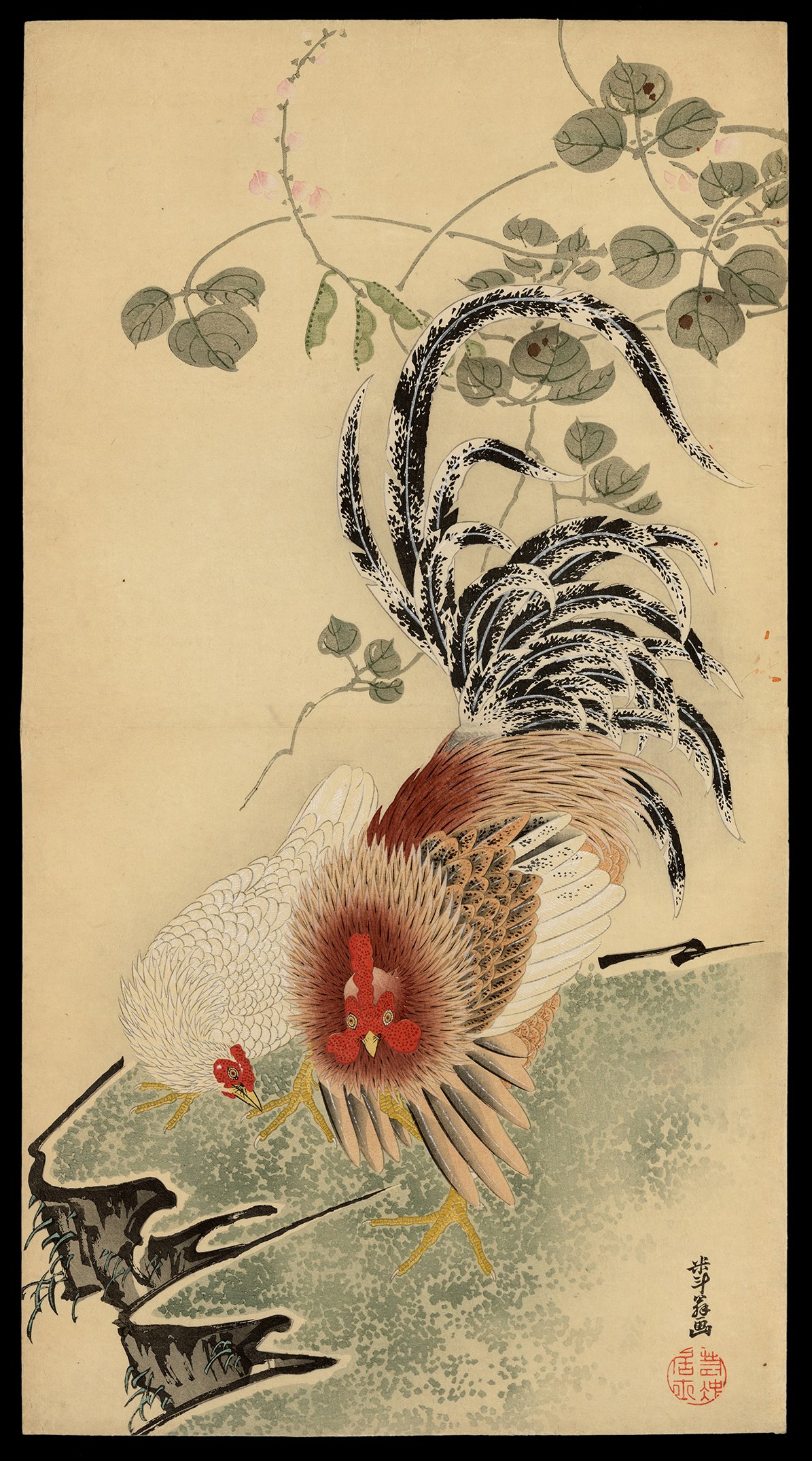Details
In this captivating woodblock print by Ito Jakuchu, the renowned Japanese painter's unique artistic vision comes to life. Renowned for shunning any particular stylistic school and forging his own path, Ito's eccentricity is palpable in this composition. Known for his dynamic depictions of birds and flowers, Ito gained notoriety for his wild portrayals of roosters. In this print, the oversized composition, reminiscent of Ito's scroll paintings, is seamlessly translated into the woodblock printing medium. The composition features Ito's signature rooster and hen, gracefully navigating the edge of a cliff. The cliff is rendered with a calligraphic style that pays homage to the artist's traditional paintings, imbuing the scene with a sense of fluidity and movement. The rooster, with its wildly extravagant feathers dominating nearly half the composition, infuses the design with a lively presence and subtle humor that is uniquely characteristic of Jakuchu’s work. Through this masterful composition, Jakuchu invites viewers into a world of vibrant colors, dynamic compositions, and whimsical charm, showcasing the timeless allure of his artistic legacy.
Connoisseur's Note
This oversized work is in excellent condition. Uncommonly, it is composed of two sheets of paper stitched together. The technical quality of the printing is second to none. The quality and size of this work suggest that its production required a premium. Consequently, this work is quite rare.



